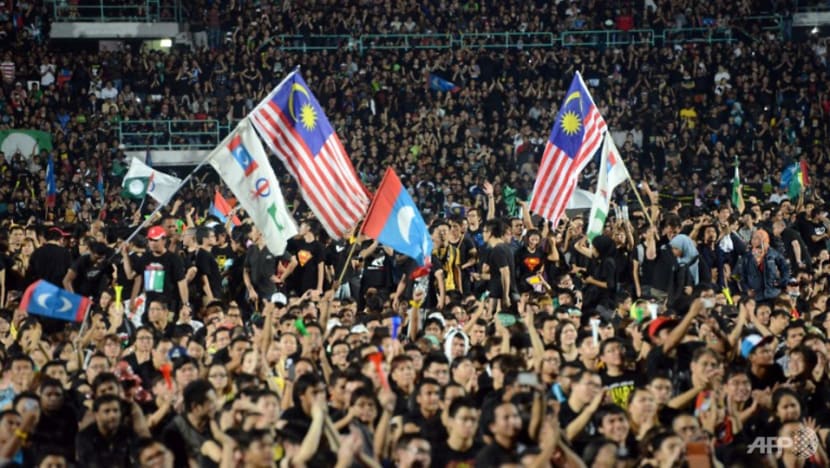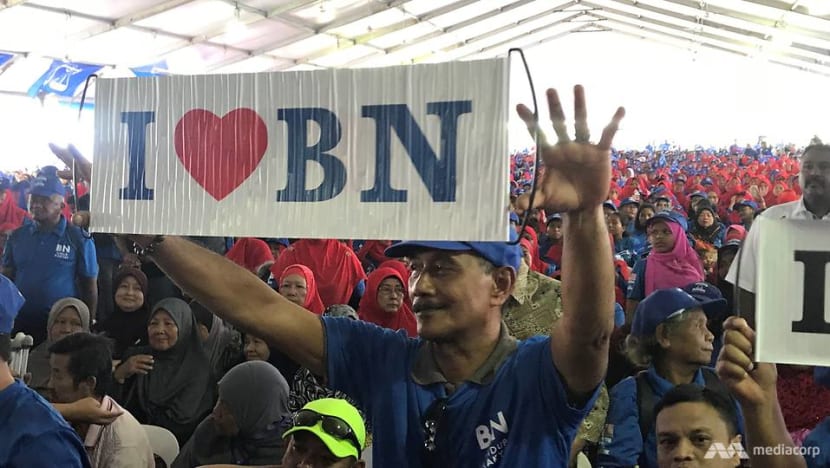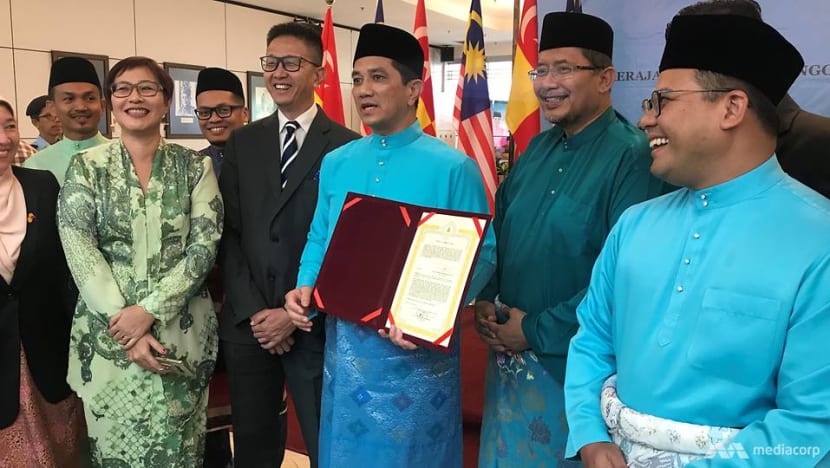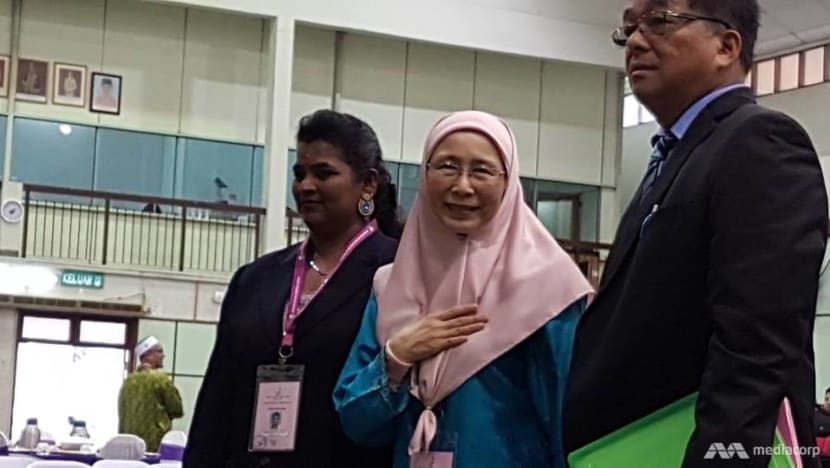commentary Commentary
Commentary: The raging battle for Selangor, the richest state in Malaysia
Many multi-cornered fights expected in the richest state of Malaysia make Selangor one that should be closely watched as the Malaysia General Elections heat up, says one observer.

Pakatan Rakyat supporters in Opposition-held Selangor. (File photo: AFP/Goh Chai Hin)
SINGAPORE: Campaigning for the Malaysian General Elections has reached the the final stretch.
The electoral contest for the Selangor state government will be especially critical, since Selangor is the richest state in Malaysia. Prime Minister Najib Razak has also vowed to win back control of the Selangor state government by all means necessary.
The re-delineation exercise has already granted the Barisan Nasional (BN) a significant advantage, as it packs non-Malay voters into larger districts, significantly diluting the strength of their vote.
PAS MAY DRAW MALAY VOTES AWAY
In order to understand whether the Pakatan Harapan opposition coalition – comprising the Democratic Action Party (DAP), Parti Keadilan Rakyat (PKR), Parti Amanah Negara (Amanah), and Parti Pribumi Bersatu Malaysia (Bersatu) – can retain control of the Selangor state assembly, we must examine how Parti-Islam se Malaysia (PAS), in forcing multiple three-cornered contests against the BN and Pakatan coalition, upsets the status quo.
This is the single greatest uncertainty of the upcoming elections.
READ: A commentary highlighting how PAS will not go quietly into the night.
PAS is fielding candidates in 46 out of the 56 Selangor state assembly seats. That PAS is fielding candidates in so many areas, even in areas where it has little chance of winning, is a sign that it is determined to cripple the Pakatan coalition.
Though PAS is expected to lose significant non-Malay support given its continued agenda of Islamic governance, it may still draw away Malay votes from Pakatan. If PAS is successful in splitting the Malay votes in the constituencies where it contests, then the opposition coalition may lose a significant share of state assembly seats.
Furthermore, if we include other smaller parties like Parti Rakyat Malaysia (PRM), Parti Socialis Malaysia (PSM), Ikatan and independent candidates, the number of multi-cornered contests balloons across Selangor.
There are six state districts with five candidates contesting, 14 state districts with four candidates contesting, and 32 state districts with three-cornered contests. Only four districts see straight fights between two candidates.
Where the vote share differences between the three major parties of PAS, Pakatan, and BN are expected to be fairly low, even a small loss of votes to other minor parties may tip the scales.

FOCUS ON GOMBAK AND HULU LANGAT DISTRICTS
If the BN is going to leverage PAS’s entry as a third-party spoiler to win back Selangor, then we can expect it to try to win back Malay-majority state seats where PAS is expected to split the Malay vote.
Even if the BN is not able to gain enough seats to form a majority government in Selangor, a post-election Selangor coalition government between BN and PAS is not unimaginable. The urban and semi-urban Malay-majority constituencies of Gombak and Hulu Langat in Selangor paints an interesting picture.
PAS is contesting in all state constituencies in Gombak, which is a marginal Malay-majority parliamentary constituency of Selangor Chief Minister Azmin Ali. The state seats of Sungai Tua (61 per cent Malay), Gombak Setia (78 per cent Malay), and Hulu Kelang (87 per cent Malay) within Gombak were all won by the opposition – one from PKR and two from PAS – in the last general elections.
Sungai Tua incumbent Amirudin Shari from PKR is fighting for re-election against both PAS and BN candidates. Gombak Setia’s PAS incumbent Hasbullah Mohd Ridzwan is contesting Azmin’s political aide Muhammad Hilman Idham and the BN. Hulu Kelang incumbent Saari Sungib, originally from PAS but now with Amanah, is also fighting for re-election against candidates from his former party and from BN.
PAS is also contesting in all state constituencies in Hulu Langat. On paper, this constituency is a PAS stronghold. Parliamentary incumbent Dr Che Rosli Che Mat won by 15 percentage points in the previous election, and the recent redelineation saw the proportion of Malays in this constituency increase from 53 per cent to 66 per cent.
The state seat of Dusun Tua (63 per cent Malay) is seeing PAS incumbent Razaly Hassan contest against DAP newbie Edry Faizal and BN candidate Mohd Zin Isa.

Semenyih (68 per cent Malay) BN incumbent Johan Abd Aziz has a four-corner fight against three-time Semenyih contestant PSM’s Arutchelvan, Bersatu’s Bakhtiar Mohd Nor, and PAS’s Mad Shahmidur.
PAKATAN UPBEAT ABOUT CHANCES
My interviews with Pakatan candidates and their party activists in both Gombak and Hulu Langat suggest most were sanguine about their prospects of retaining or winning their seats, and of PAS’s chances of beating them.
Although they lament the loss of hardworking PAS party activists from their campaign machinery, they were optimistic that more moderate ordinary voters who were not core members of PAS could be swayed to switch their support to Pakatan.
Moreover, even if their districts were all Malay majority seats, all thought that non-Malay support will continue to play an important role in determining the final outcome. If Pakatan could maintain the turnout and support levels of non-Malay voters, then their prospects of winning would be enhanced, even if the Malay vote was split with PAS and BN.
Campaign speeches of these candidates to the voters consistently emphasised that only a Pakatan-controlled Selangor government would maintain and enhance the material welfare of ordinary people in Selangor. In Gombak or Hulu Langat, candidates repeatedly highlighted the successful policy programmes of the current Selangor state government.
These included the frequently-mentioned Kasih Ibu Smart Selangor initiative for women, free water for households, and incentives for married couples. Where the audience was primarily non-Malay, the candidates stressed Pakatan’s commitment to protecting the rights of Malaysians to practice their own religion.
Changes in party allegiances pose significant challenges to Pakatan candidates. Hulu Kelang’s Saari Sungib faces the challenge of educating voters in his constituency that he had shifted from PAS to Amanah, and therefore was contesting under the “blue eye” logo of PKR. Apparently, many voters thought he remained under his former party.

Edry Faizal’s background as a DAP member was also a stumbling block for his outreach in the semi-urban conservative Malay areas in his Dusun Tua district. Hence, his campaign materials made no mention of the DAP, and consistently emphasised the PKR’s logo instead.
BERSATU MAY NOT FARE WELL IN RURAL AREAS
In rural BN strongholds in Selangor, the general expectation is that Bersatu candidates will do somewhat poorly, given that it is a relatively new party with a highly centralised leadership in Dr Mahathir Mohamad and former Deputy Prime Minister Muhyiddin Yassin, with a fairly fractured state-level leadership team and an underfunded party machinery.
Any gains would be a welcomed surprise. In any case, Bersatu’s focus is on the electoral contests in Johor and Kedah, not in Selangor.
What is notable is the significant difference between the list of candidates that Bersatu announced on Apr 23 contesting in the elections and the actual candidates fielded five days later, suggesting substantial internal conflict within the party in Selangor.
Out of 12 announced candidates, only five candidates were successfully fielded as originally announced. Whether these numerous reversals would significantly impact their electoral prospects in Selangor remains to be seen.
What remains certain is that the battle for a rich, developed and urban state like Selangor, home to some of the country’s best-educated citizens and having been in the opposition’s control since 2008, will be a prized win for any party.
Elvin Ong is a PhD candidate in Political Science at Emory University, and an NUS-Overseas Graduate Scholar. This article is part of a series of commentaries by the S. Rajaratnam School of International Studies (RSIS) on the 14th Malaysian General Election. Read others in the series including:
A commentary on the deep ironies among the opposition parties.
A commentary on PAS as a force to be reckoned with.












